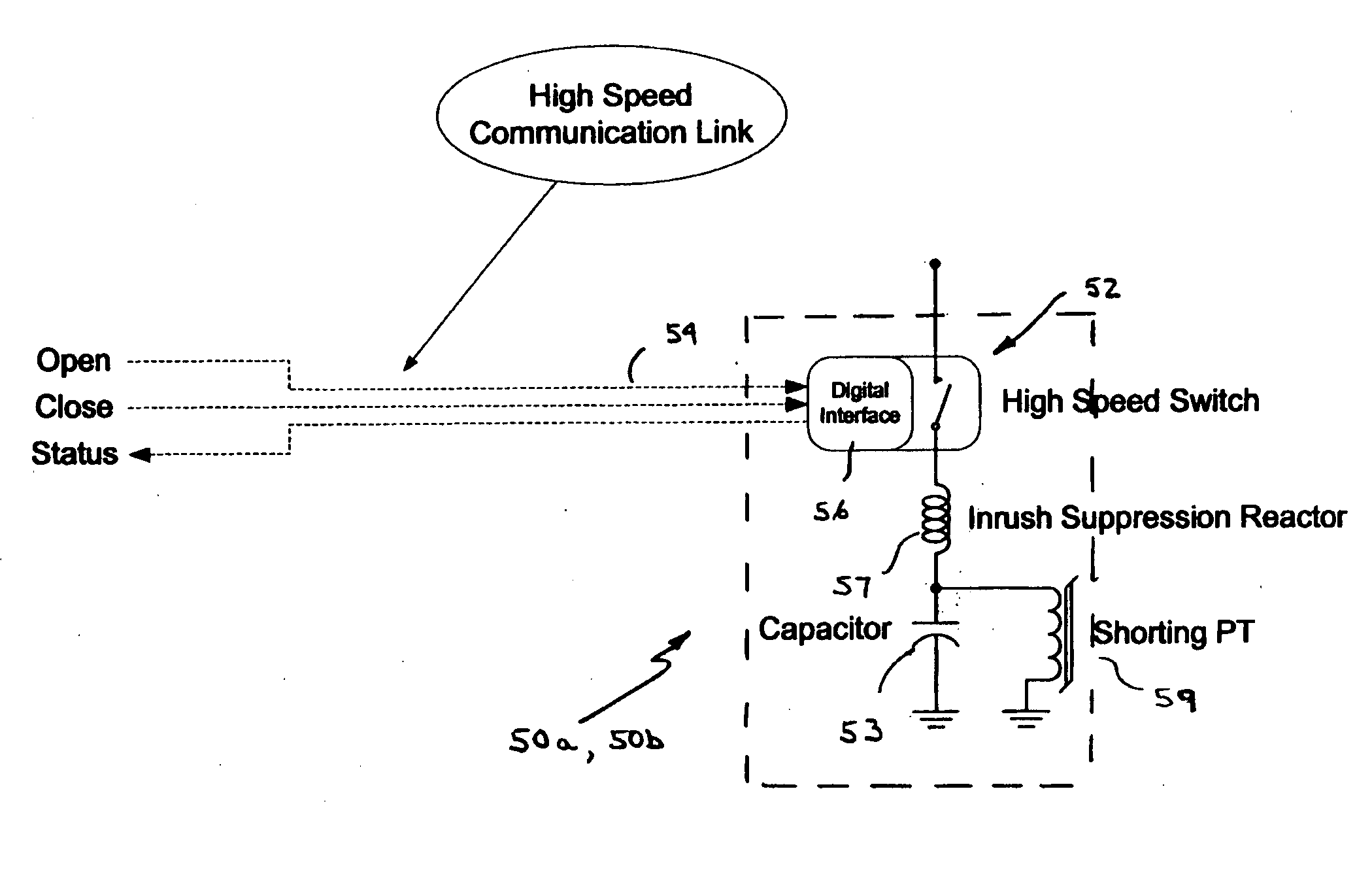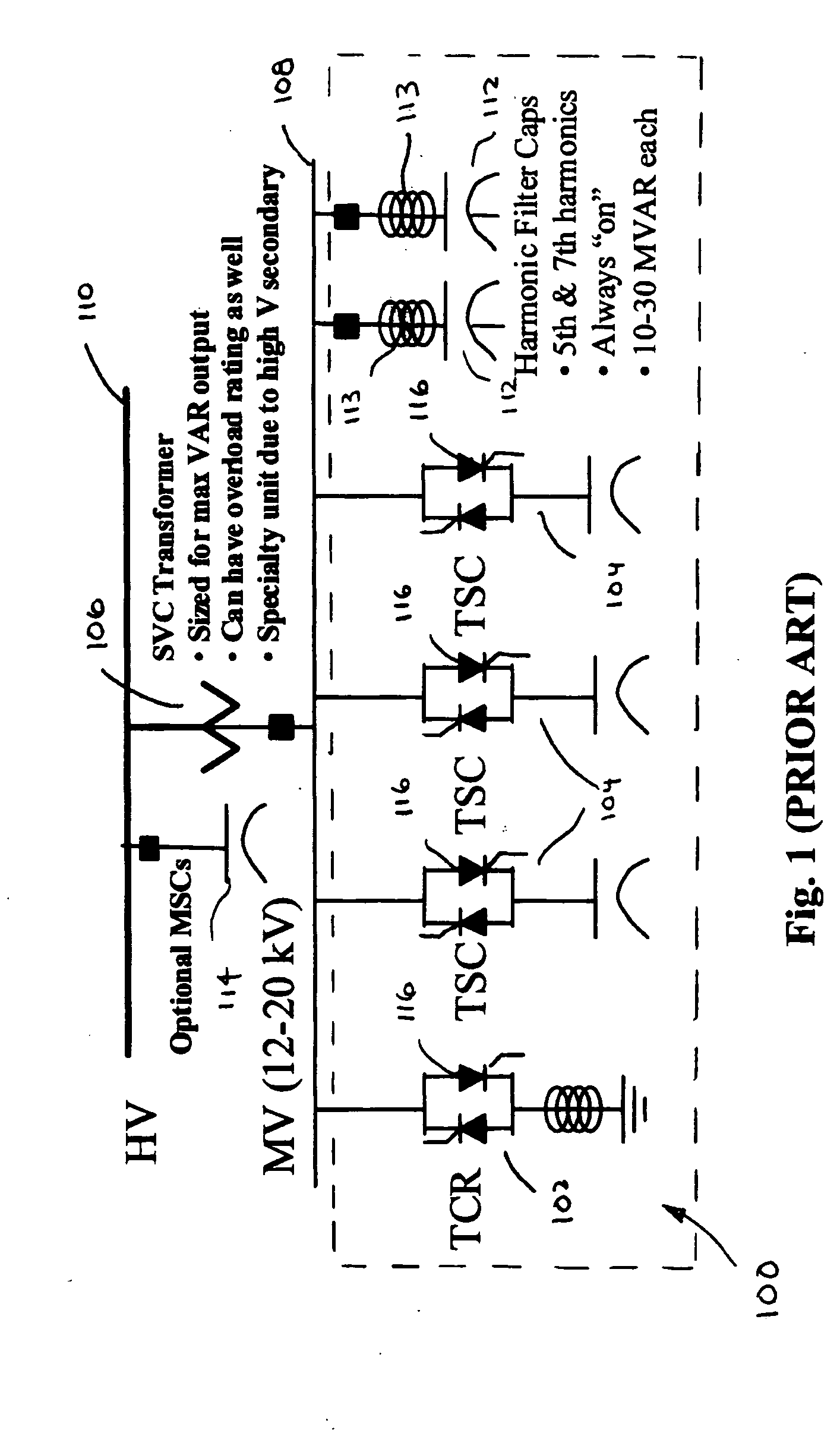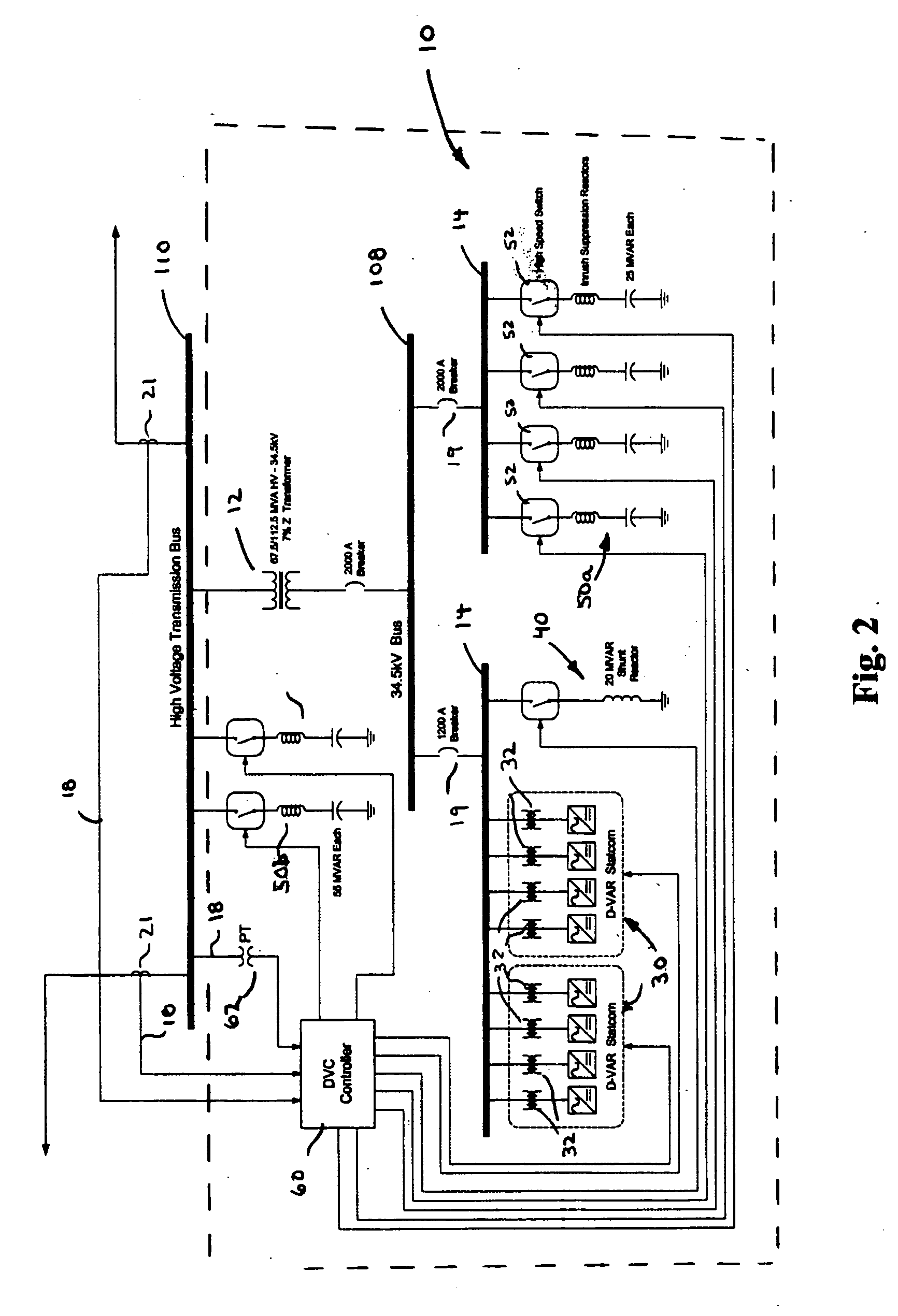Dynamic reactive compensation system and method
a reactive compensation and dynamic technology, applied in the field of electric power utility networks, can solve problems such as voltage instability, voltage collapse, voltage instability on the grid, etc., and achieve the effects of reducing the opportunity for reducing the tendency for voltage collapse, and reducing the chance of unstable behavior and/or oscillation
- Summary
- Abstract
- Description
- Claims
- Application Information
AI Technical Summary
Benefits of technology
Problems solved by technology
Method used
Image
Examples
Embodiment Construction
[0037] Referring to FIG. 2, a dynamic voltage system 10 is shown connected in shunt with a transmission line 110 of a utility power network via a first transformer 12, which steps down the higher voltage (e.g., greater than 35 kV carried on transmission line 110 to a lower voltage, here 34.5 kV, of a medium voltage bus 108. Dynamic voltage system 10 includes, in this embodiment, a pair of D-VAR® statcom systems 30, each of which are coupled to an internal bus 14 with summing transformers 32. D-VAR® statcom systems 30 are available from American Superconductor Corporation, Westboro, Mass. Because each D-VAR® statcom system 30 has a nominal 480 VAC output, two stages of transformation (transformers 12 and 32) to interface to a high voltage transmission system are used.
[0038] Dynamic voltage system 10 also includes a shunt reactor 40 and, in this embodiment, four capacitor banks 50a, each coupled to internal bus 14. Shunt reactor 40 provides negative (inductive) VARs over and above th...
PUM
 Login to View More
Login to View More Abstract
Description
Claims
Application Information
 Login to View More
Login to View More - R&D
- Intellectual Property
- Life Sciences
- Materials
- Tech Scout
- Unparalleled Data Quality
- Higher Quality Content
- 60% Fewer Hallucinations
Browse by: Latest US Patents, China's latest patents, Technical Efficacy Thesaurus, Application Domain, Technology Topic, Popular Technical Reports.
© 2025 PatSnap. All rights reserved.Legal|Privacy policy|Modern Slavery Act Transparency Statement|Sitemap|About US| Contact US: help@patsnap.com



